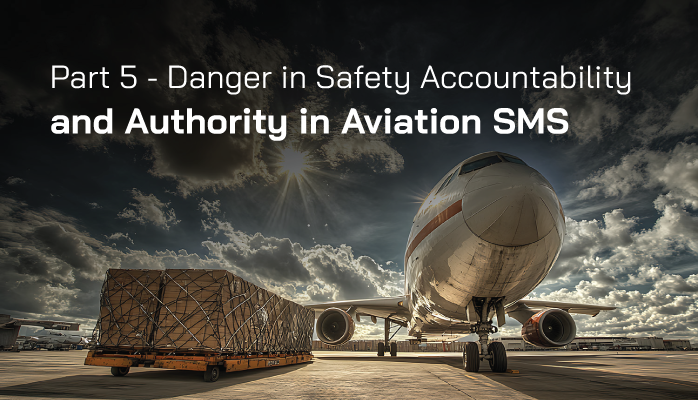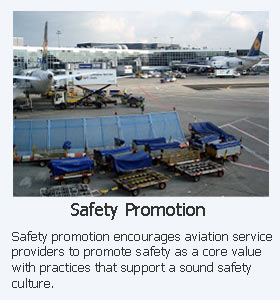Do You Understand These Aviation SMS Requirements?

How many of you find reading FAA's Part 5-Safety Management Systems relaxing and enjoyable?
Do you pick up Part 5 during your vacation and say, "Wow, this is so cool!?" Let's enjoy some light reading while I'm watching the kids play in the water. Part 5 is not a difficult read, especially if you are familiar with aviation SMS requirements.
But some snares will grab you like a shark coming from underneath.
Related FAA 14 CFR Part 5 Articles
- Overview of FAA Part 5 Requirements
- FAA Part 5 - Safety Assurance - You May Not Be Prepared
- FAA Part 5 | Safety Policy Compliance
When we read Subpart B-Safety Policy, subsection 5.23, Safety accountability and authority, you will find the danger zone. We are skipping along the beach so happy until we get to subsection 5.23(a)(2).
Don't worry, I'll offer some guidance so the aviation SMS auditor shark doesn't bite you in the tender areas. Worse yet, when the boss says, "YOU are the SMS expert, that is why I hired you! Why didn't you know that!?"
Safety Accountability & Authority Seems So Innocent
When one skips along through Subpart B-Safety Policy, we naturally think about
- Safety policy and review periods;
- Management commitment & responsibility;
- Appointment of key safety personnel;
- Emergency response plans; and
- SMS documentation.
Everything seems so sweet and innocent and easy for the technical writer to "pencil-whip" into shape. But then, WHAM! Here is a surprise.
First, some background and some quotes, as I don't expect you to have Part 5 sitting next to you.
Subsection 5.23 Safety accountability and authority.
(a) The certificate holder must define accountability for safety within the organization’s safety policy for the following individuals:
(1) Accountable executive, as described in § 5.25. (no problems)
(2) All members of management in regard to developing, implementing, and maintaining SMS processes within their area of responsibility, including, but not limited to:
(i) Hazard identification and safety risk assessment.
(ii) Assuring the effectiveness of safety risk controls.
(iii) Promoting safety as required in subpart E of this part (emphasis added)...
Related FAA 14 CFR Part 5 Articles
- FAA Part 5 Compliance: Safety Promotion (the "Overlooked Pillar")
- FAA Part 5 Compliance | Safety Assurance Analysis of Data Component
- How to Conduct Safety Performance Assessments in Aviation SMS With Part 5
Common Trap to Keep Aware Of

I'm going to simply point out a quick trap in (iii) promoting safety as required in subpart E...
Safety promotion is perhaps the most overlooked area of all aviation SMS requirements. I know Part 5 just came out, but we've been dealing with ICAO, Transport Canada, EASA SMS requirements for some time, and from my perspective, there are only a few companies that get this right using routine:
- Safety surveys;
- Safety newsletters;
- Documenting safety meetings;
- Safety bulletins (read files, electronic message boards); and
- Safety articles.
After working with hundreds of companies for many years, I see that initially, safety managers will try to manage all these safety promotion activities, but it is a lot of work! Even when safety teams have the best aviation SMS tools, this is still a big task to coordinate with regularity.
As I said, safety managers start with the best of intentions, such as quarterly safety newsletters and annual safety surveys. But things happen, just as life happens. Safety managers are busy putting out fires, following up on investigations, performing audits, etc. Critical activities fall through the cracks and soon, before you know it, you are no longer in compliance with the SMS regulatory requirements.
Lessons Learned in Safety Accountability & Authority
As I stated earlier, aviation SMS tools do help. If we're merely a case of "give safety managers good tools," then there would be fewer problems. I believe there are a few strategies that will help you with this SMS challenge.
If you have good software tools, use them. I'm surprised at how many companies have these tools yet still fail to promote safety. This leads me to believe two things:
- The manager who is assigned these safety promotion activities should not be the safety manager; or
- Give safety managers more time to deal with these safety promotion requirements.
Luckily, I don't think that SMS auditors place much focus on these requirements until you have a more mature SMS implementation. For those in the United States, you have some time to get your processes lined out, but there is certainly a lesson here.
The lesson is that "SMS is not the sole responsibility of the safety manager and the accountable executive." All managers must embrace, accept, and promote safety within the organization. That brings me full circle to the first point above: "The manager who is assigned safety promotion activities does not have to be the safety manager." Spread out the workload. Experience has shown me that unless these activities are distributed, your safety promotion requirements will fall into non-compliance.
Related Articles on Safety Accountability and Authority in Aviation SMS
- Distinguishing Between Responsibility, Authority, and Accountability in Your Aviation SMS
- 5 Steps to Define Accountabilities in Aviation SMS
- Best Practices for Safety Accountabilities in Aviation SMS - With Resources
Final Thoughts on Safety Accountability and Authority
When I started writing this article, my first intention was to outline the trap in defining accountability for assuring the effectiveness of safety risk controls. This is another danger zone that can easily catch you unaware. We'll deal with this in another article.
See how your company will do in an aviation SMS audit, which is a safety assurance activity.
Last updated January 2025.







